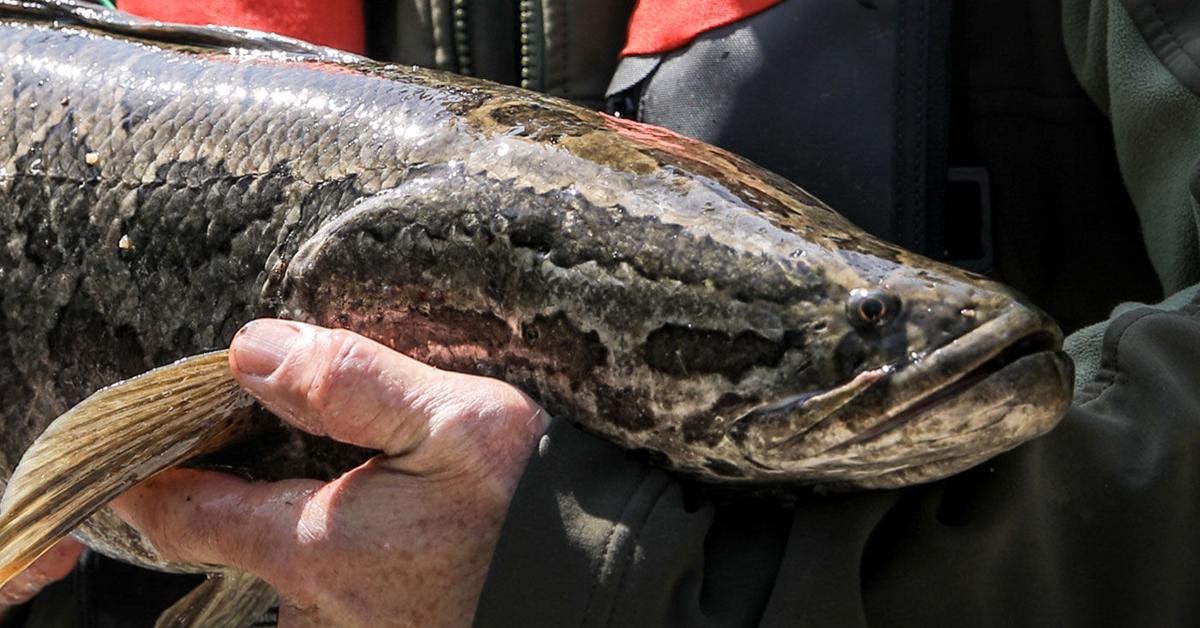
It does not eat small animals and cannot traverse land, but it does breathe air, is slowly inching its way toward the James River and state wildlife authorities recommend cutting off its head should you catch it.
Virginia Department of Game and Inland Fisheries officials say the northern snakehead, once dubbed “frankenfish,” recently has been found in a tributary of the James in Colonial Heights.
Although the invasive species is not the monster it once was made out to be, officials still worry about its potential threat to the ecosystems and food chains in the state’s waterways.
“Exotic species like snakeheads can disrupt natural aquatic systems and may have significant impacts by feeding on and competing with native and/or naturalized fishes,” game department officials said in a statement regarding the fishy find. “In addition, they may transmit parasites and diseases to native wildlife in those systems.”
“Most new occurrences are caused by people intentionally introducing (stocking) them into new bodies of water,” the statement reads. “Citizens are reminded that this activity is a misdemeanor punishable by up to 12 months in jail, a fine of $2,500 or both.”
The fish, which are plentiful in the Potomac River and its tributaries, had been found from Lake Michigan to Lake Anna before its April discovery in Colonial Heights’ Lakeview Reservoir on Swift Creek.
At some point, the fish likely will make it upstream to Scottsville and beyond.
“They’ll probably make it up the James River, eventually,” said John Odenkirk, a researcher with Virginia Tech and with the game department. “But it’s going to take some time. They found their way around Great Falls [in the Potomac River], although it took 10 years. And they prefer calmer and muddier waters, so that part of the James isn’t going to be their favorite place.”
Odenkirk has studied the snakehead for the past 15 years. He said the species is hearty, athletic and highly adaptive. It is strong and can swim upstream to spawn. It can breathe air and survive in extremely shallow pools of water so long as it remains moist.
“While snakeheads are freshwater fish, it has been determined that they can tolerate a fairly high level of salinity, this is especially true for juveniles,” game department officials said in the statement. “They may be able to colonize additional drainages through extreme storm events, riding freshets or by illegal introductions.”
They also taste pretty good, and fresh-caught fish can bring a premium price in some restaurants, officials admit. That’s one reason the fish has been illegally stocked or released into lakes and reservoirs.
“We don’t want people to move them, and because they can breathe air, they’re really easy to move from location to location,” Odenkirk said. “And a lot of people really like this fish. It fights hard when caught and it tastes good and there’s almost a cult of support that’s grown up around it.”
While it is illegal to release a northern snakehead into a lake, reservoir, pond or river, it is legal to catch-and-release the species. However, it remains illegal to possess a live northern snakehead.
“If an angler wishes to keep a legally caught northern snakehead, the fish must be killed … and the angler must call the [northern snakehead] hotline or other [inland fisheries] contacts,” the game department’s website states. “Kill the fish by removing the head, separating the gill arches from the body or removing the internal organs and put it on ice as quickly as possible.”
Although the northern snakehead is considered an invasive species, Odenkirk said, his research has shown that the fish has had little negative effect. It seems to co-exist with bass and other fish, and its populations seem to hold steady rather than grow exponentially.
“I prefer to call it ‘potentially invasive,’ ” he said. “There is a lot of concern with what is unknown about the snakehead, and that’s a lot. So far, it hasn’t proved a danger in the Potomac.”
In fact, the species’ population in the Potomac, where it has been for at least 15 years, has leveled out and even seen some decline, according to Odenkirk’s research.
“We don’t know a lot about this fish, yet,” he said. “I’m not a proponent of the snakehead, I’m just trying to study and understand it.”
http://www.roanoke.com/news/virginia/snakehead-found-in-colonial-heights-reservoir-fish-likely-to-make/article_3913b7ab-b796-5cf3-ac8c-bf5f275e72e2.htmlBagikan Berita Ini














0 Response to "Snakehead found in Colonial Heights reservoir; fish likely to make way up James River"
Post a Comment